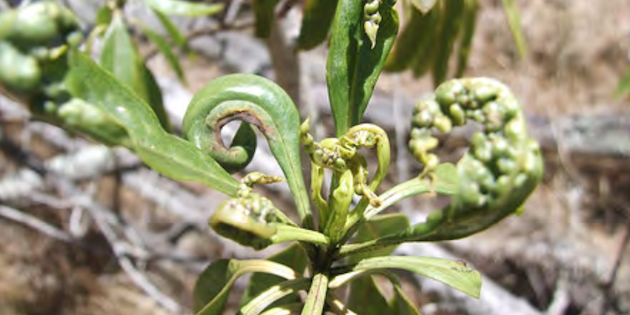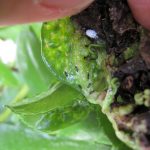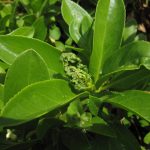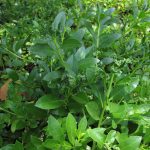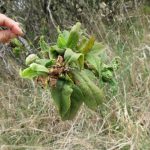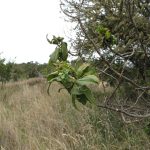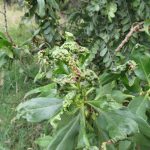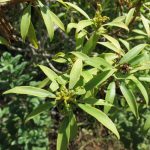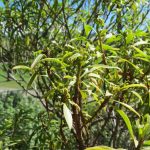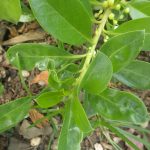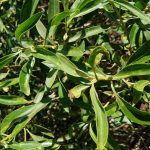Naio Thrips
Naio Thrips (Klambothrips myopori)
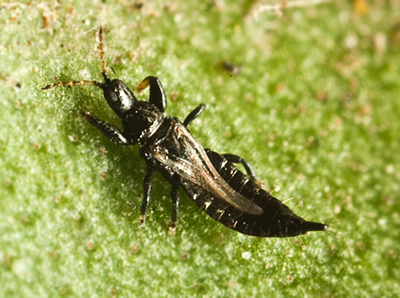
Regulatory Status: (N/A)
Description
Naio thrips are insects which attacks the naio, a native tree species that is extremely important to Hawai’i’s ecosystems. Thrips are small sap-sucking insects with feathery wings. They can cause scarring of leaf, flower, and fruit surfaces leading to lethal plant damage. Naio thrips can be found on many Myoporum species, but is especially noticeable on naio (Myoporum sandwicense). The leaf curling and gall formation effects of thrips on naio plants will be noticed before any insects are seen. These thrips are small, less than 1/20th inch long, and are shiny dark brown with a noticeable posterior tube. Immature thrips are similar in shape but are yellow to orange in color.
Impacts
 Naio thrips are causing widespread damage on the popular landscaping Myoporum plants in southern California and the San Francisco area. In Hawaiʻi, this new pest can potentially have devastating effects on our native naio trees which are an important component of lowland and coastal dry forest and comprise roughly one half of the plant biomass of the māmane-naio forest ecosystem.
Naio thrips are causing widespread damage on the popular landscaping Myoporum plants in southern California and the San Francisco area. In Hawaiʻi, this new pest can potentially have devastating effects on our native naio trees which are an important component of lowland and coastal dry forest and comprise roughly one half of the plant biomass of the māmane-naio forest ecosystem.
Distribution
Naio thrips, which are probably native to Australia, can be transported to new areas in infested landscaping plants and locally via the wind. This pest was first noticed on the island of Hawaiʻi in March 2009, and has now spread throughout the Big Island. Naio thrips were also found in O’ahu in 2018. They have not been found on any other islands and preventing the spread is still possible! Please report all sightings of Naio Thrips on O’ahu, Kaua’i, Maui, Lana’i and Moloka’i.
What you can do
If you see this species call 643-PEST and/or visit 643pest.org to report. On Big Island, please note any new sightings and report to 643pest.org. If you see this species on O’ahu, report the sighting here. Other actions you can take to reduce the spread of this pest are:
- Do not plant naio. For landscaping purposes, plant other native or non-invasive plants! (For healthy landscaping choices visit Plant Pono.)
- Monitor your naio plants or naio plants in your surrounding area for thrip damage.
- Do not transport naio between islands.
For additional information, visit
-
Assessing the impacts of an invasive thrips (Klambothrips myopori) infestation on native Myoporum in Hawaii. Cynthia King, Robert Hauff, Leyla Kaufman, and Mark Wright. 2011.
-
Early Detection and Rapid Response Plans for naio thrips:
Photos of thrips:
- Adult Thrips
- Adult Thrips
- Larvae
Photos of naio with damage from thrips:
Photos of naio with damage from other species (not naio thrips):
- Damage to naio not caused by thrips
- Damage to naio not caused by thrips
- Damage to naio not caused by thrips
- Damage to naio not caused by thrips
